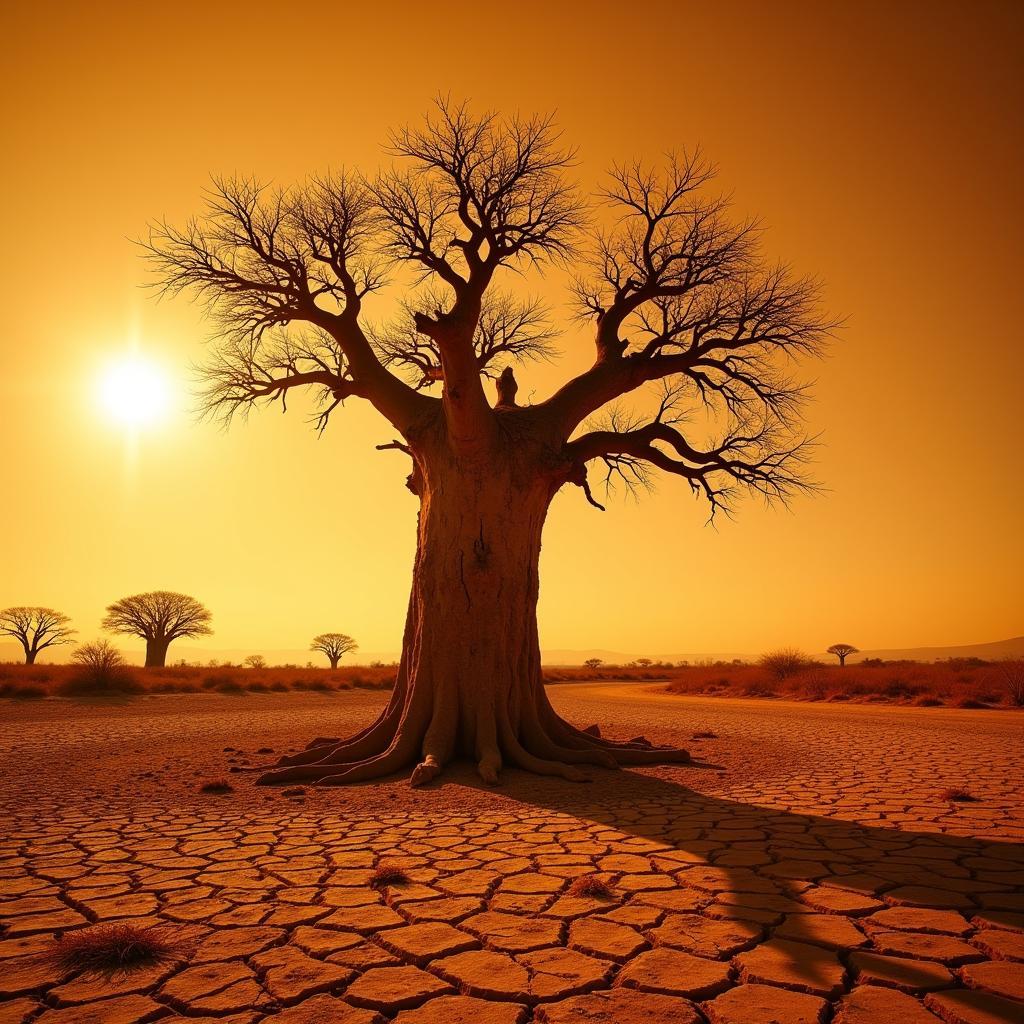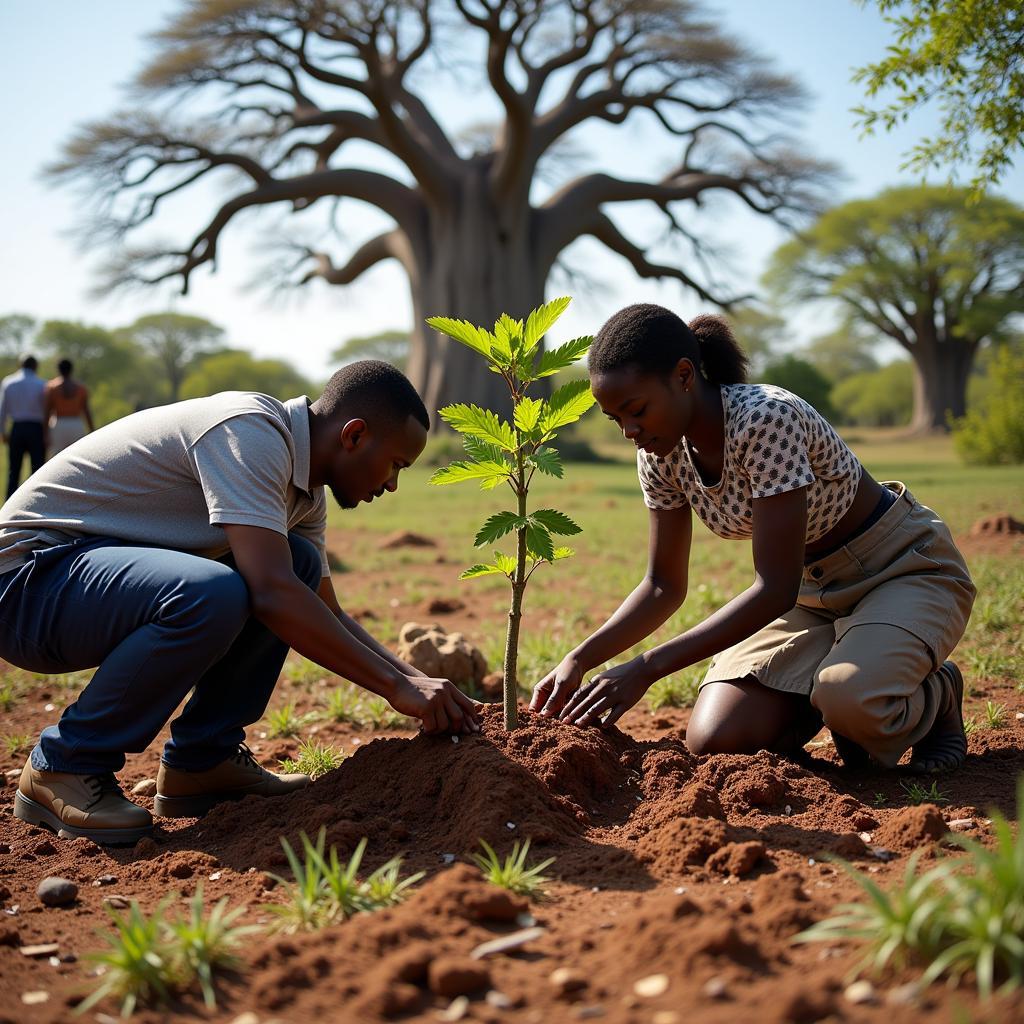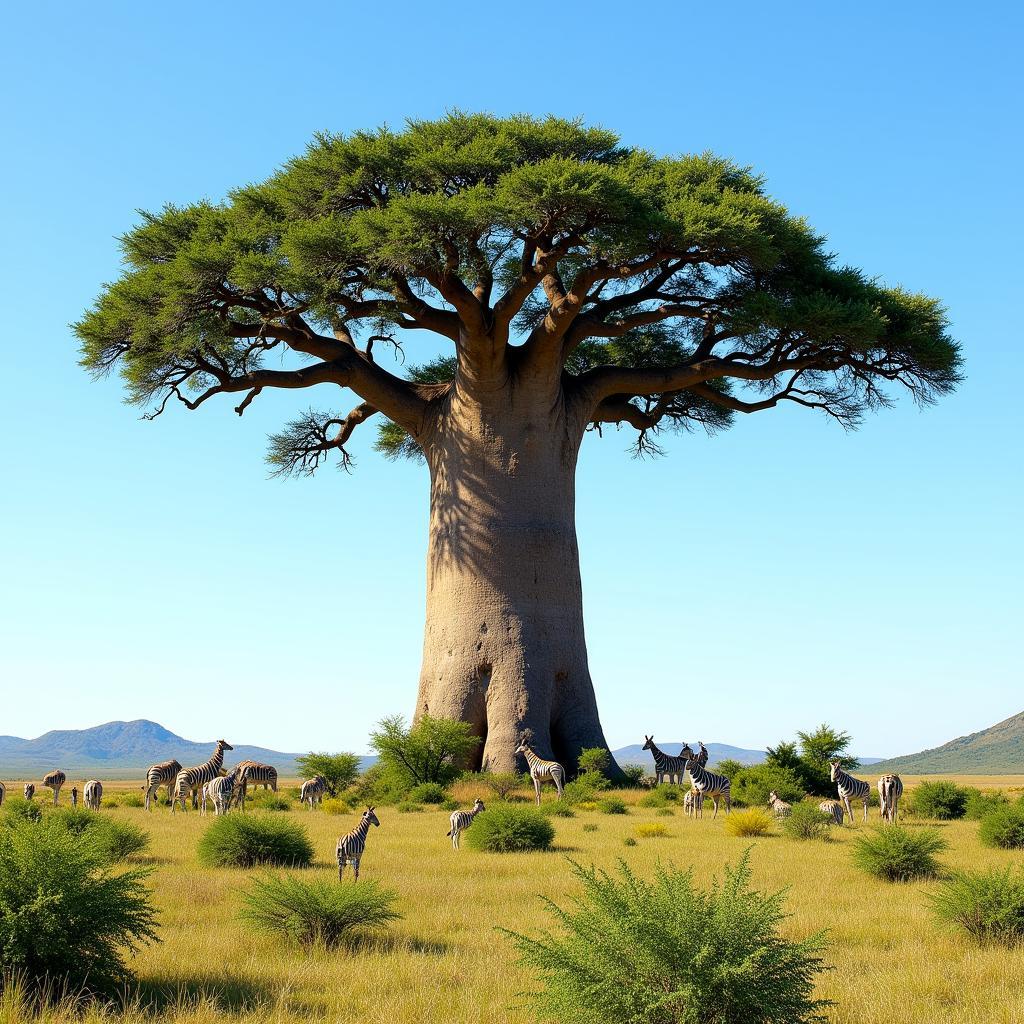Are African Baobab Trees Endangered?
The African baobab tree, an iconic symbol of the African savanna, is facing a growing threat. Are African baobab trees endangered? This article delves into the challenges facing these magnificent giants and explores the reasons behind their decline. We’ll examine the impact of climate change, human activity, and disease on the baobab population, and discuss the crucial conservation efforts needed to protect them.
The Majestic Baobab: A Symbol of Resilience Under Threat
Baobab trees, scientifically known as Adansonia, are renowned for their extraordinary longevity and unique appearance. Some of these ancient trees have lived for over a thousand years, silently witnessing the ebb and flow of African history. Their thick, fire-resistant bark, massive trunks that can store vast amounts of water, and ability to withstand harsh drought conditions have made them a symbol of resilience. However, these ancient giants are now facing unprecedented challenges that threaten their very existence. Recent studies have shown an alarming increase in the mortality rate of mature baobabs, raising concerns about their long-term survival. The question remains: are African baobab trees truly endangered?
Learn more about other fascinating flora: African flowering trees.
Why are African Baobab Trees Dying? Unraveling the Complex Factors
Several factors contribute to the decline of baobab populations, painting a complex picture of the challenges they face. Climate change is a major culprit, with rising temperatures and altered rainfall patterns exacerbating drought conditions, making it harder for these water-dependent trees to survive. Human activities, such as land clearing for agriculture and the unsustainable harvesting of baobab bark and fruit, further compound the problem. Additionally, fungal diseases and pests can weaken and even kill these majestic trees. Understanding these interconnected factors is crucial to implementing effective conservation strategies.
 African Baobab Tree Dying Due to Climate Change
African Baobab Tree Dying Due to Climate Change
Conservation Efforts: Protecting the Future of the African Baobab
Recognizing the urgent need for action, conservationists and researchers are working tirelessly to protect these iconic trees. Efforts focus on monitoring baobab populations, studying the specific threats they face in different regions, and developing strategies to mitigate these risks. Community-based conservation projects are empowering local communities to sustainably manage baobab resources and play an active role in their protection. These initiatives are critical to ensuring the long-term survival of the African baobab. Learn more about the unique plants and animals of Africa: African animal and plants.
Are African Baobab Trees Officially Endangered? Understanding the Conservation Status
While not all baobab species are currently classified as endangered, the increasing mortality rates and the ongoing threats they face warrant serious concern. The International Union for Conservation of Nature (IUCN) Red List assesses the conservation status of different species, and some baobab species are listed as vulnerable or near threatened. This indicates that they are facing a high risk of extinction in the wild in the medium-term future. The situation requires continuous monitoring and proactive conservation efforts to prevent further decline and ensure the long-term survival of these magnificent trees.
 Baobab Conservation: Community Efforts
Baobab Conservation: Community Efforts
What is Being Done to Protect the African Baobab Tree?
Numerous initiatives are underway to address the threats facing the African baobab. These include research into drought-resistant varieties, promoting sustainable harvesting practices, and establishing protected areas. Education and awareness campaigns are also crucial in highlighting the importance of these trees and engaging local communities in their protection. The combined efforts of researchers, conservationists, and local communities offer hope for the future of these iconic trees. Find out more about other unique African trees like the bottle tree: African bottle tree.
Conclusion: The Future of the African Baobab Tree
The African baobab tree, a symbol of resilience and longevity, is facing unprecedented challenges. While the question of whether African baobab trees are officially endangered depends on the specific species, the overall trend is concerning. Continued research, conservation efforts, and community involvement are essential to safeguarding these magnificent trees for future generations. The fate of these ancient giants rests on our collective action to address the threats they face. You can read more about the tragic decline of baobab trees here: african baobab trees dying.
 African Baobab Tree in Thriving Grassland
African Baobab Tree in Thriving Grassland
FAQ
- What is the lifespan of a baobab tree? Baobab trees can live for over a thousand years.
- Why are baobab trees important? They play a vital role in the ecosystem, providing food and shelter for various animals.
- How does climate change affect baobab trees? Increased temperatures and altered rainfall patterns exacerbate drought conditions, threatening their survival.
- What are the main threats to baobab trees? Climate change, human activity, and diseases are the primary threats.
- How can I help protect baobab trees? Supporting conservation organizations and promoting sustainable practices are ways to contribute.
- Are all baobab species endangered? Not all species are currently endangered, but some are classified as vulnerable or near threatened.
- Where can I learn more about baobab trees? You can find more information online and through reputable conservation organizations. The African grassland biome is a crucial habitat for these trees: african grassland biome.
Need support? Contact us 24/7: Phone: +255768904061, Email: kaka.mag@gmail.com, Address: Mbarali DC Mawindi, Kangaga, Tanzania.


